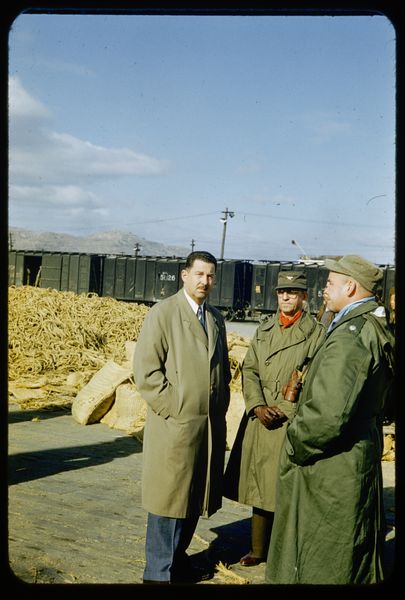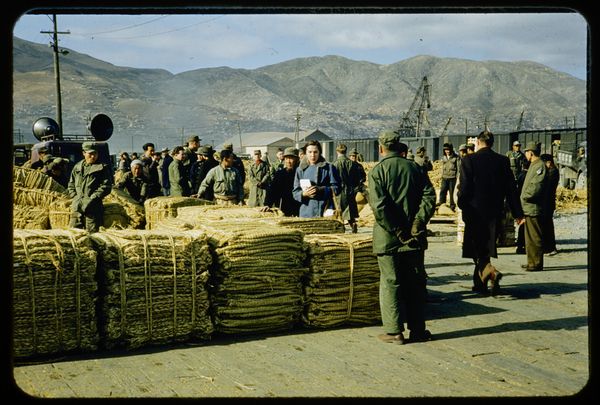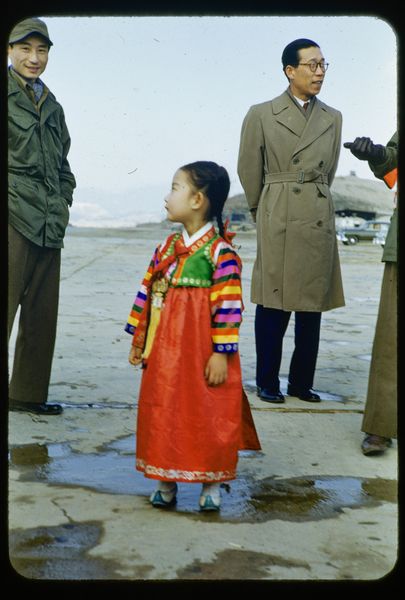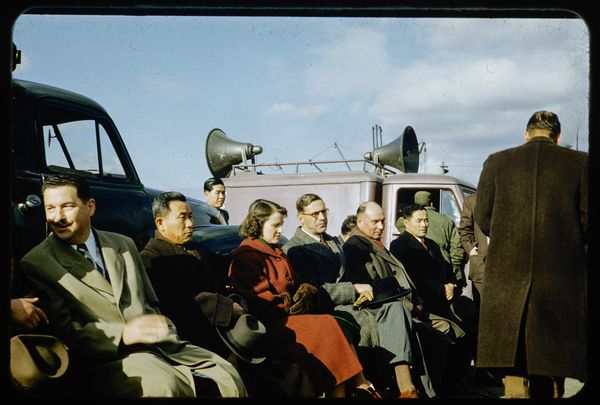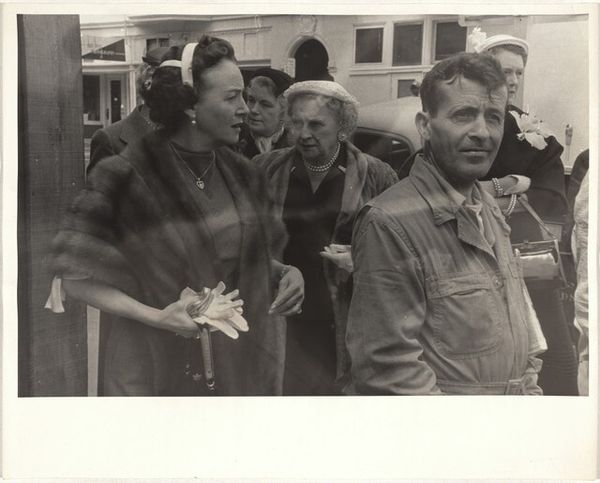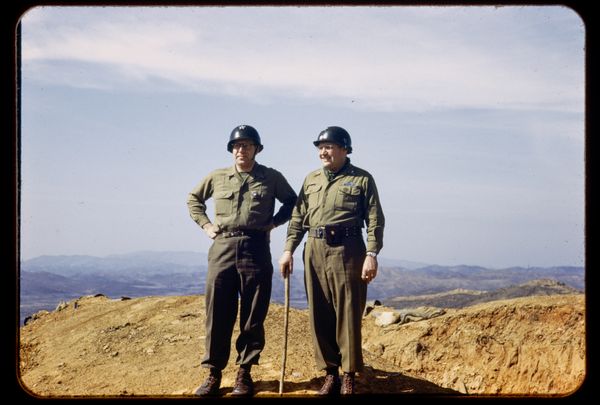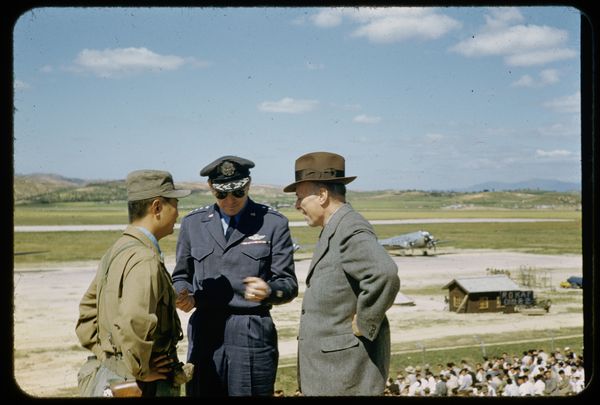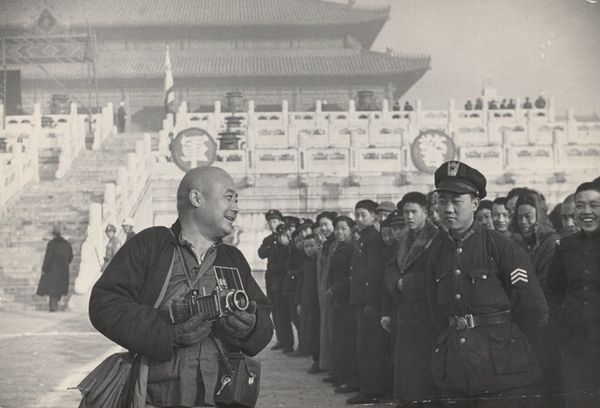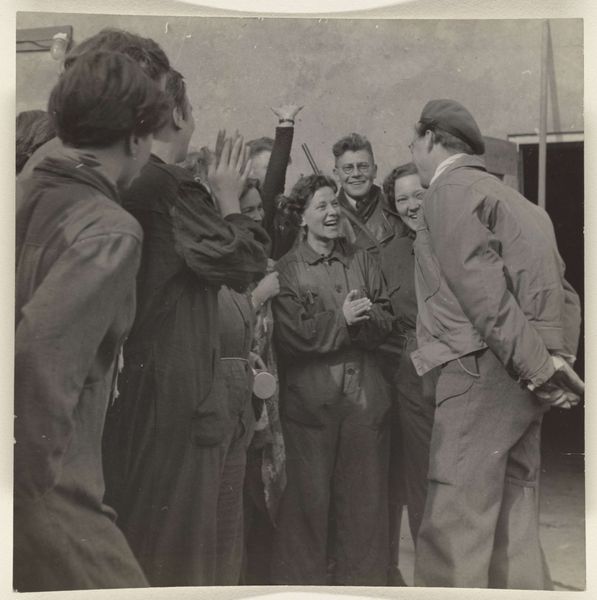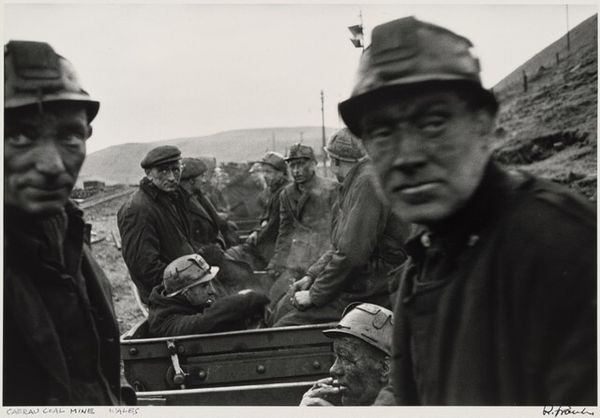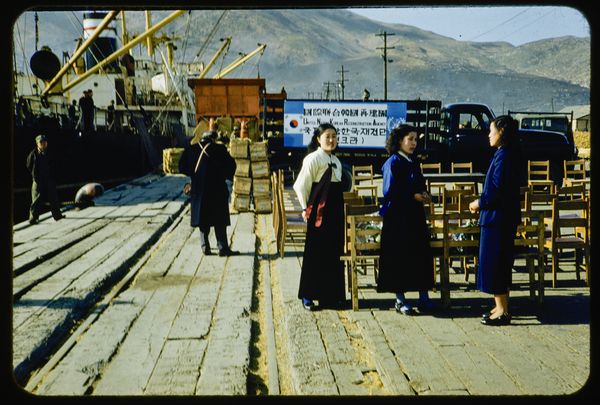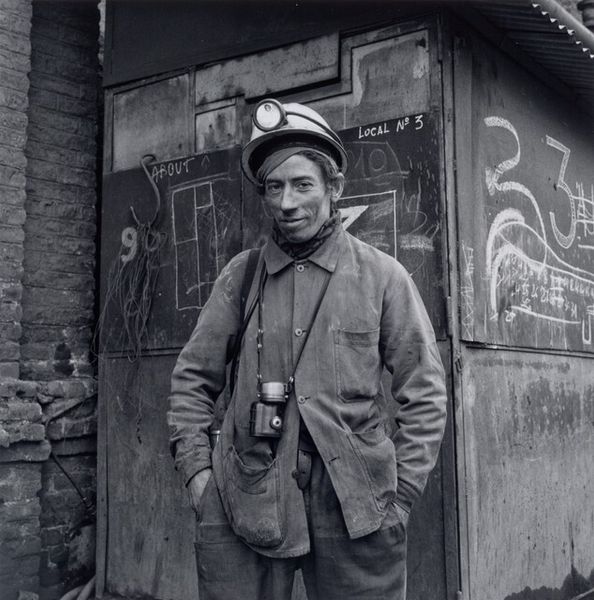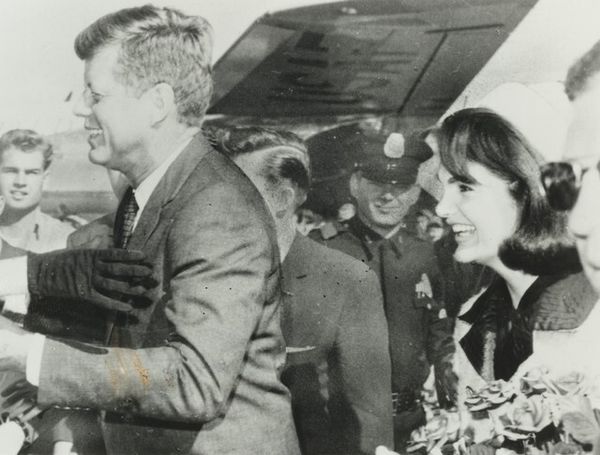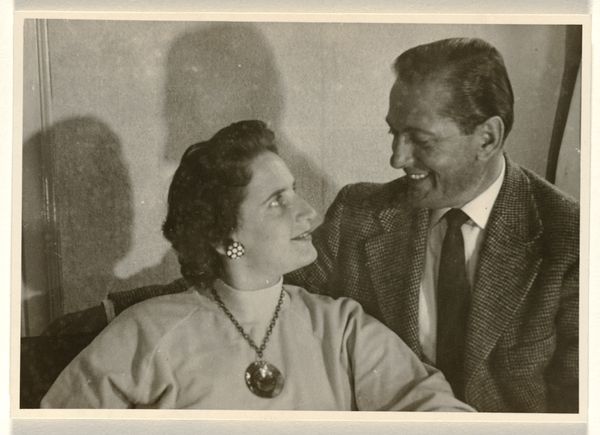
Dimensions: height 5 cm, width 5 cm
Copyright: Rijks Museum: Open Domain
Curator: Look at this photograph, "Een schip met graan van de UNKRA, Busan," by David Ketel, taken in 1952. It's part of the Rijksmuseum collection. Editor: What strikes me immediately is the contrast: those formal figures so sharply dressed juxtaposed against the chaotic piles of what appears to be rope. It's strangely serene and unsettling all at once. Curator: Absolutely. It captures a very specific moment in time, doesn't it? The UNKRA, the United Nations Korean Reconstruction Agency, was crucial in rebuilding Korea after the war. This image speaks volumes about international aid efforts, a key element in post-conflict resolution and social change in Korea during that era. Editor: Considering the time it was taken, the focus on rope strikes me as interesting. Was it a crucial material in these aid efforts? Were they re-establishing supply routes and fishing industries reliant on such supplies? What can you tell me about the photographer, Ketel, and his process? Did he often highlight material elements? Curator: Ketel worked with the UN, documenting its activities. His access gave him insight into the everyday processes that fueled large-scale operations. As for the material significance of rope, it would have been instrumental for securing cargo, fishing, and various reconstruction activities. This photograph emphasizes how materials are inextricable from humanitarian and nation-building operations. Editor: The arrangement almost romanticizes this material—turning practical necessity into an object worthy of framing. It shows the entanglement of global politics with the very tactile realities of daily life in post-war Korea. Did this photo play a role in shaping public perception of these reconstruction efforts? Curator: Possibly, since imagery like this provided tangible visuals, humanizing the statistics of international aid. The photo was able to illustrate the work through individuals and objects affected by aid—people receiving resources needed to begin again. Editor: A quiet yet profound statement, meticulously composed—even the grain of the rope has something to tell us. Curator: Indeed, there's much to unpack here, and it shows how documentary photography functions to materialize the consequences of global-scale efforts in postwar societies.
Comments
No comments
Be the first to comment and join the conversation on the ultimate creative platform.
